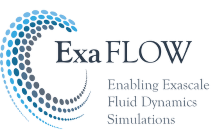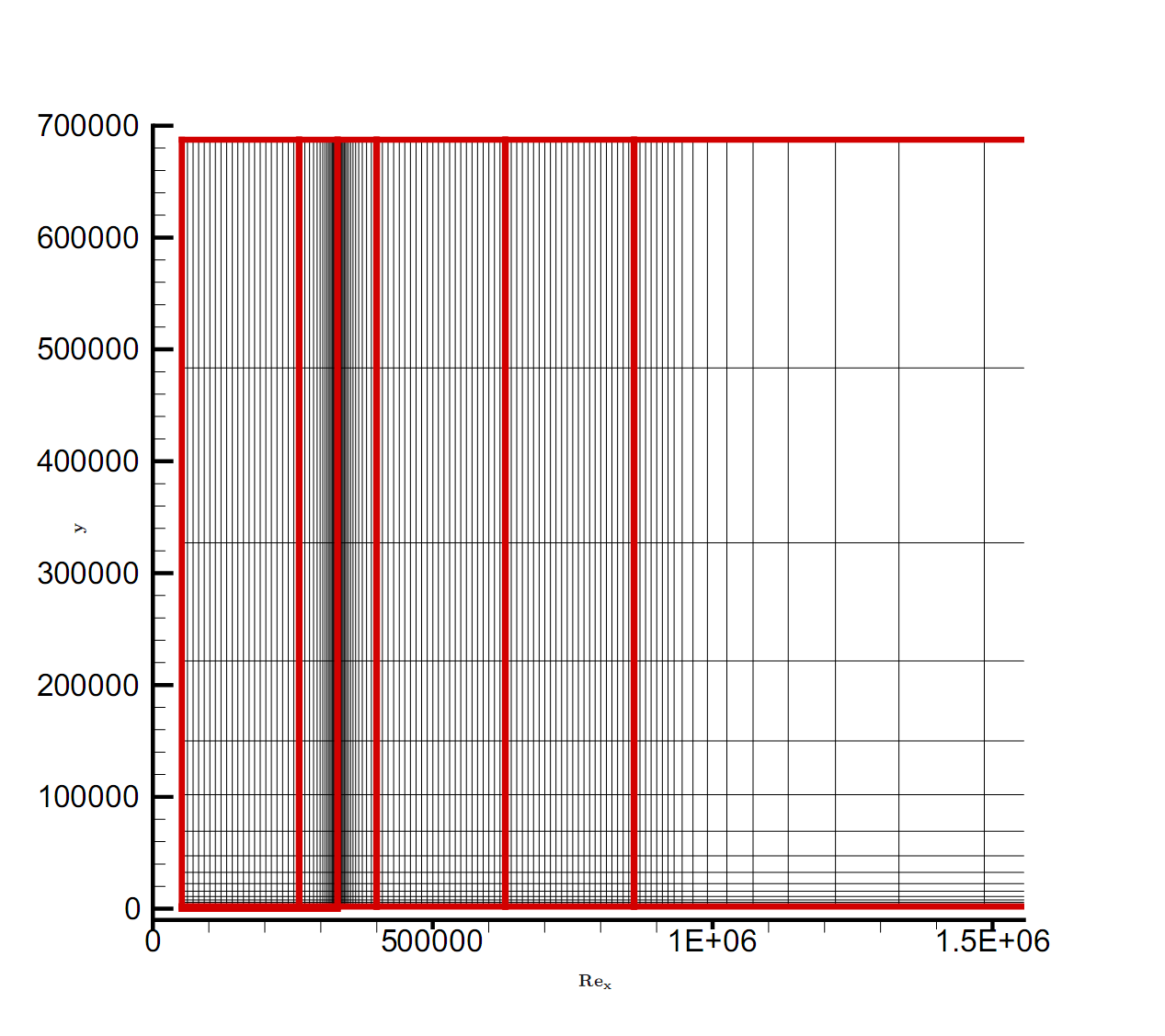The DNS code ns3d is based on the complete Navier-Stokes equations for compressible fluids with the assumptions of an ideal gas and the Sutherland law for air. The differential equations are discretized in streamwise and wall-normal directions with 6th-order compact or 8th-order explicit finite differences. Time integration is performed with a four-step, 4th-order Runge-Kutta scheme. Implicit and explicit filtering in space and time is possible if resolution or convergence problems occur. The code has been continuously optimized for vector and massive-parallel computer systems until the current Cray XC40 system. Boundary conditions for sub- and supersonic flows can be appropriately specified at the boundaries of the integration domain. Grid transformation is used to cluster grid points in regions of interest, e.g. near a wall or a corner. For parallelization, the domain is split into several subdomains as illustrated in the figure.
Illustration of grid lines (black) and subdomains (red). A small step is located at Rex=3.3E+05.




